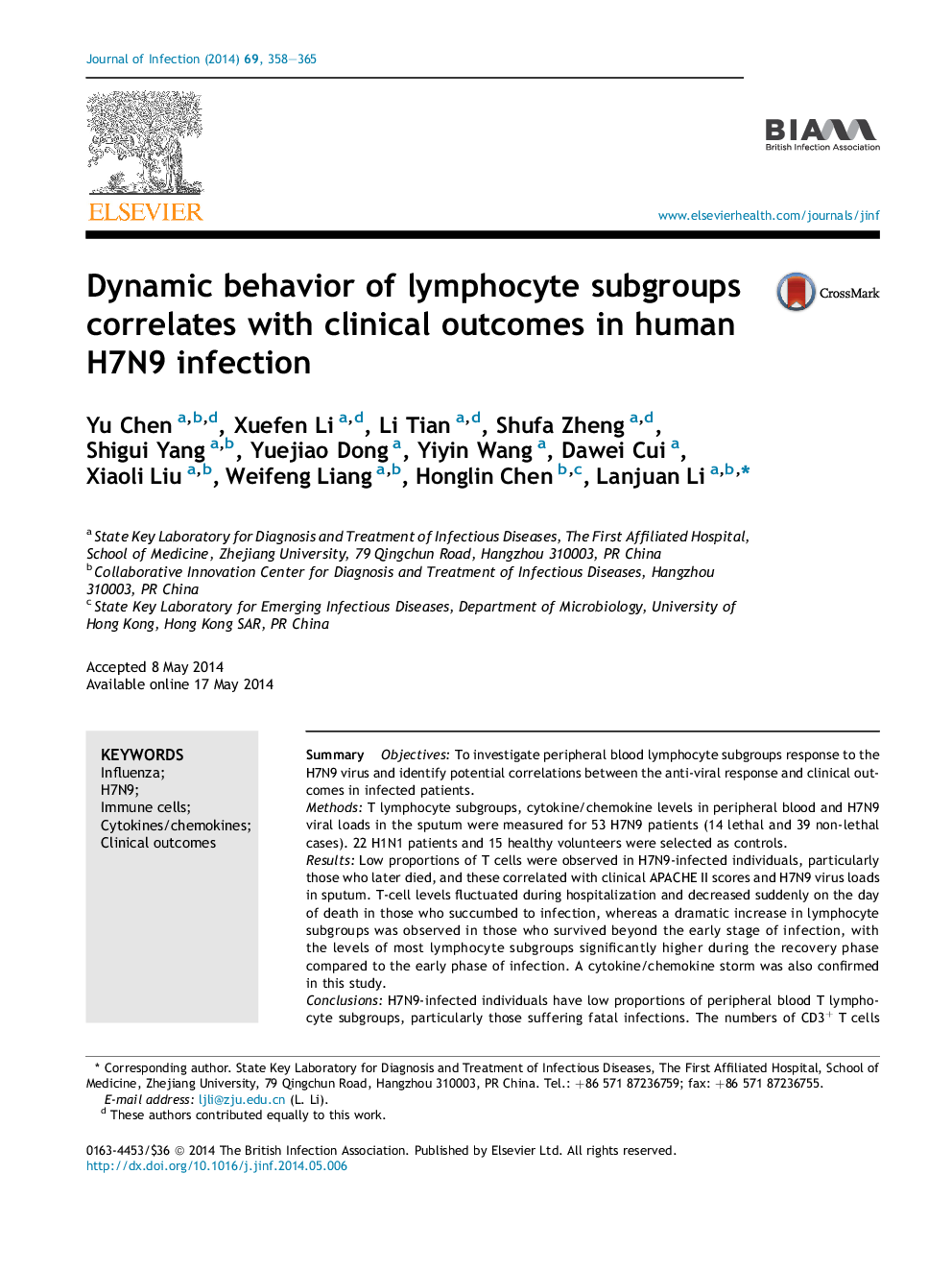| کد مقاله | کد نشریه | سال انتشار | مقاله انگلیسی | نسخه تمام متن |
|---|---|---|---|---|
| 6123127 | 1219617 | 2014 | 8 صفحه PDF | دانلود رایگان |

SummaryObjectivesTo investigate peripheral blood lymphocyte subgroups response to the H7N9 virus and identify potential correlations between the anti-viral response and clinical outcomes in infected patients.MethodsT lymphocyte subgroups, cytokine/chemokine levels in peripheral blood and H7N9 viral loads in the sputum were measured for 53 H7N9 patients (14 lethal and 39 non-lethal cases). 22 H1N1 patients and 15 healthy volunteers were selected as controls.ResultsLow proportions of T cells were observed in H7N9-infected individuals, particularly those who later died, and these correlated with clinical APACHE II scores and H7N9 virus loads in sputum. T-cell levels fluctuated during hospitalization and decreased suddenly on the day of death in those who succumbed to infection, whereas a dramatic increase in lymphocyte subgroups was observed in those who survived beyond the early stage of infection, with the levels of most lymphocyte subgroups significantly higher during the recovery phase compared to the early phase of infection. A cytokine/chemokine storm was also confirmed in this study.ConclusionsH7N9-infected individuals have low proportions of peripheral blood T lymphocyte subgroups, particularly those suffering fatal infections. The numbers of CD3+ T cells (including CD4+ and CD8+ T cells) may predict the clinical outcome of human H7N9 infection.
Journal: Journal of Infection - Volume 69, Issue 4, October 2014, Pages 358-365